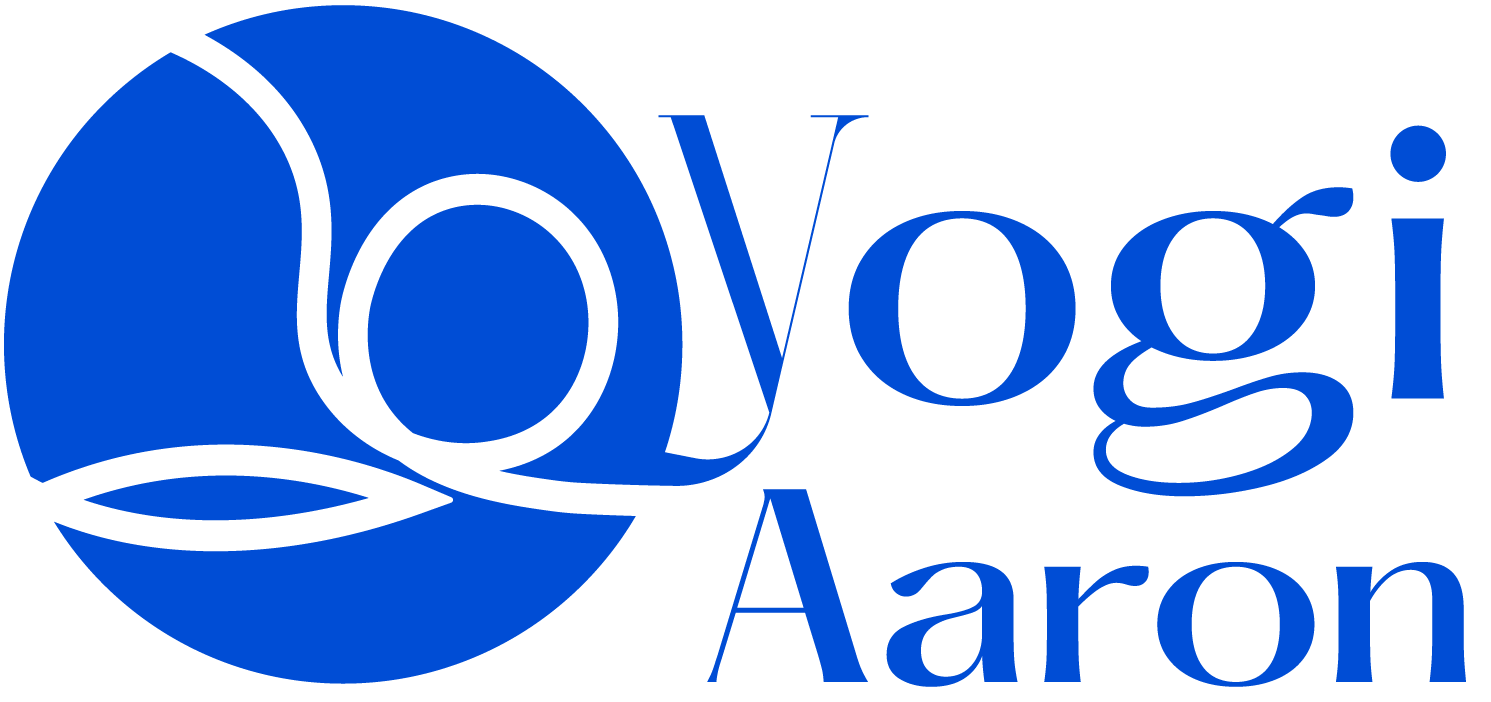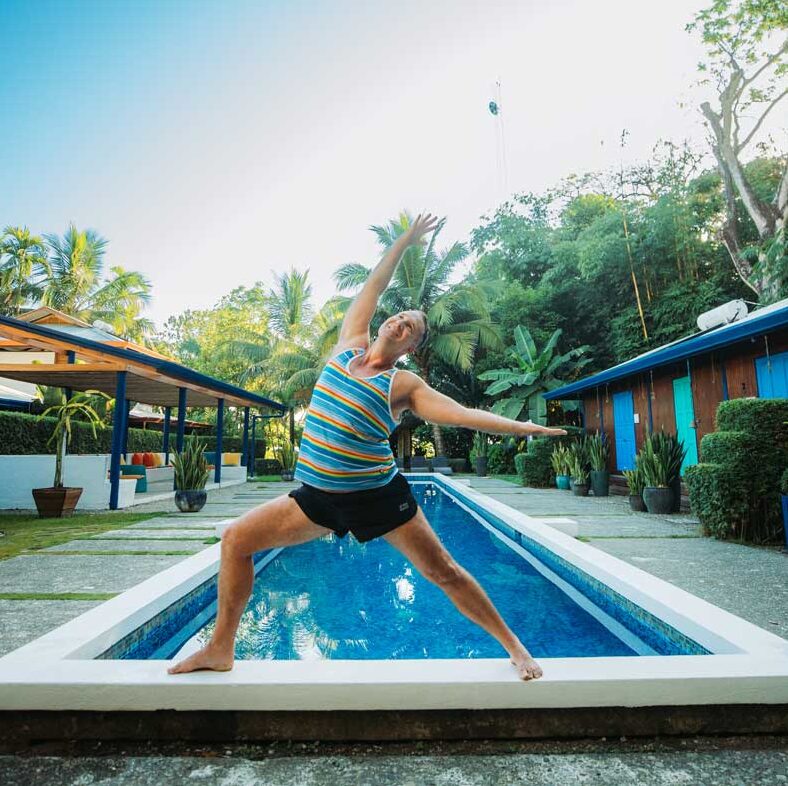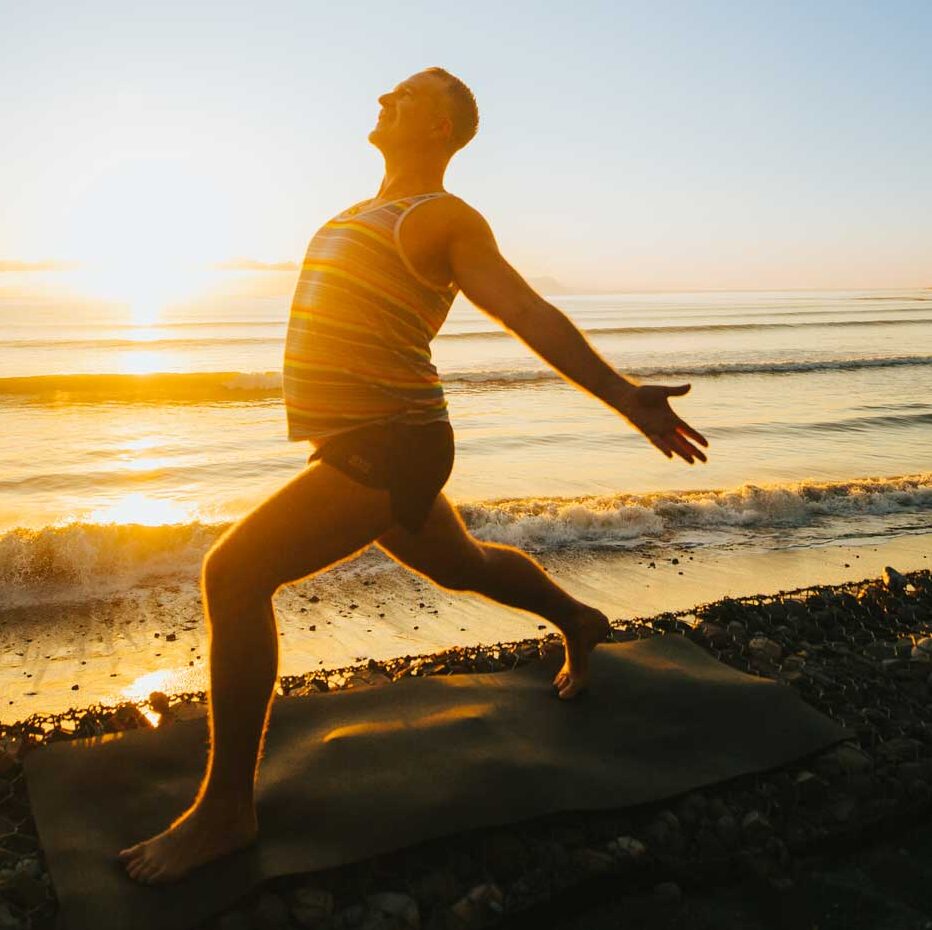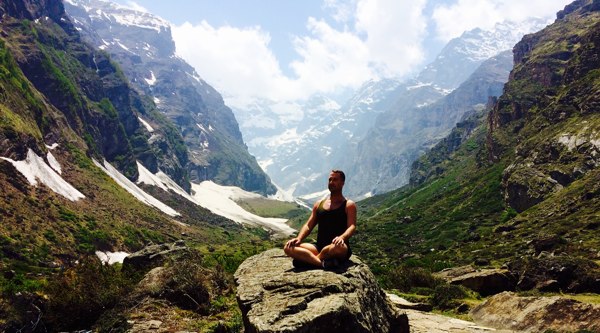Before we can explore yoga poses for neck and shoulder pain, we’ve got to talk about the elephant in the room: chaturanga dandasana, or low plank pose.
If you’ve ever attended a yoga class, chances are you’ve heard the cue to jump back into chaturanga dandasana, a push-up-like position with your body parallel to the ground. You might practice this pose 10, 20, or even 60 times in a yoga class.
There’s just one thing…
Chaturanga dandasana is probably causing you more neck and shoulder pain.
That’s because few people practice this exercise with proper alignment, and repeatedly performing chaturanga dandasana incorrectly will lead to stress and injury.
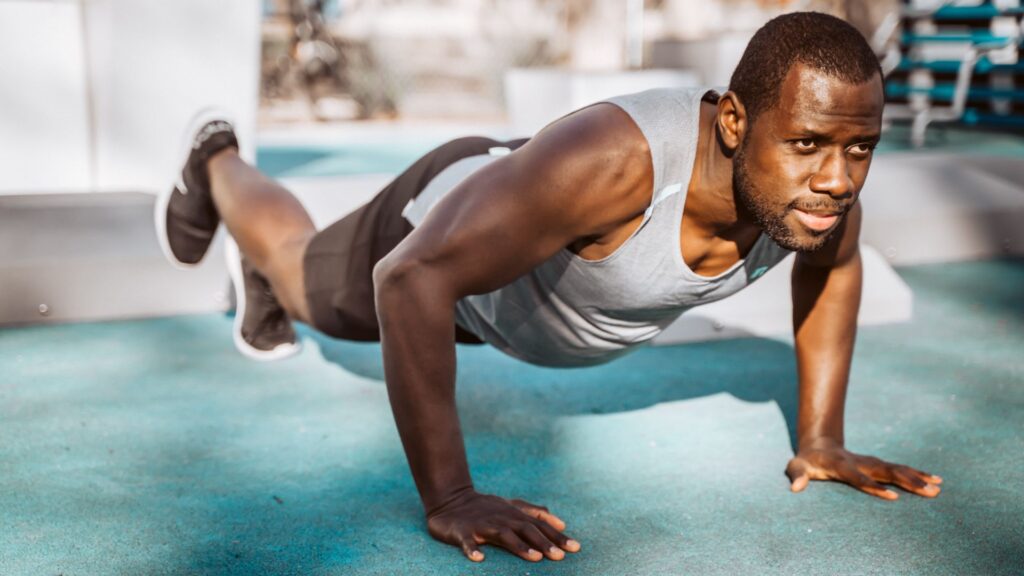
I say this because I see far too much shoulder pain in the yoga and fitness world simply because people overuse and overstress the small muscles in their shoulders while incorrectly practicing chaturanga — and the effects painfully reverberate throughout their bodies.
Thankfully, there are simple yet powerful yoga poses for neck and shoulder pain (poses that aren’t chaturanga dandasana) that will profoundly impact your overall well-being.
I’m not saying there’s never a time and place for chaturanga dandasana.
However, if we want to relieve neck and shoulder pain for good, we’ve got to stop overstressing the body and instead start activating our muscles and strengthening our neuromuscular system.
Yoga poses for neck and shoulder pain: What you need to know
Take my student Denise. A few years ago, I was leading a week-long yoga retreat. Denise informed me that she suffered from ongoing shoulder pain; while she wanted to participate in the retreat, she was anxious about chaturanga dandasana.
You might imagine Denise’s surprise when I told her not to worry; we wouldn’t be practicing chaturanga.
Denise was hesitant… A yoga retreat without jump-backs to low plank?
I explained to Denise that she likely suffered from shoulder pain because other muscles were weak. Until we identified the source of her instability, her shoulder pain would worsen. Rather than overstress her body with more chaturangas, we should address the root cause of her pain.

Denise and I talked a bit more, and I suggested that she focus on strengthening her deep abdominal muscles. That’s right… I told her to activate her core muscles to fix her shoulder pain!
So, throughout the week, we worked on targeting and activating her core muscles. I gave Denise a few Applied Yoga Anatomy and Muscle Activation™ techniques she could continue practicing at home.
A few weeks after the retreat concluded, I received an ecstatic email from Denise: her shoulder pain was virtually nonexistent!
If you’re suffering from neck and shoulder pain, there are simple hacks you can practice to feel better now — but you’ve got to stop overusing and overstressing your shoulders because of your ego.
Take it from me, someone who, at 30 years old, experienced searing neck and shoulder pain. I can confidently say my shoulder injuries were 100 percent ego-driven!
Now…
Let’s look closer at the neck and shoulder muscles and review the benefits of strong, stable, activated shoulder muscles. Then, I’ll share five easy yoga poses for neck and shoulder pain relief today.
Supporting stability: How neck and shoulder muscles contribute to mobility and alignment
From an AYAMA perspective, the shoulders are crucial to overall stability and wellness.
Consider the synergy between the shoulders and the spine, particularly the upper spine. The shoulders will be vulnerable to weakness and injury if the spine is weak (and vice versa.)
Activated shoulder muscles are essential for stability in the neck; when the shoulders do not maintain shoulder integrity, neck pain often ensues.
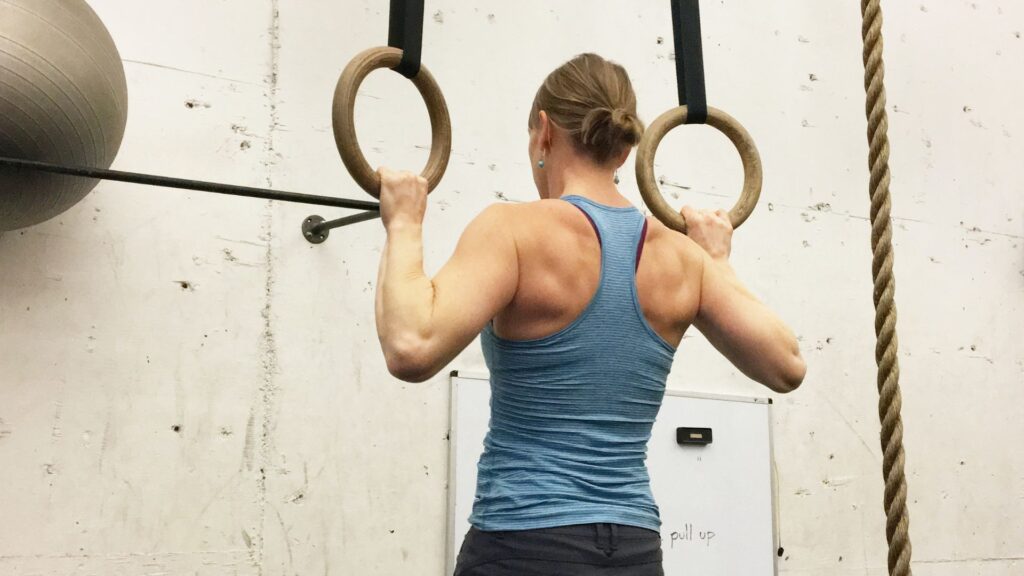
Suffering from ongoing tension headaches? Weak shoulders might be to blame. When Danish researchers compared 60 adults with headaches to 30 individuals without, they found that neck and shoulder muscles were 26 percent weaker in the participants with regular tension headaches.
There is even an interesting symbiotic relationship between the hips and the shoulders. When one is not functioning correctly, the other tends to compensate.
The anatomy of neck and shoulder muscles
The shoulder is one of your body’s most complex series of joints.
It’s located where your humerus (upper arm bone) fits into your scapula (shoulder blade), similar to the relationship between a ball and socket.
There are four directions of shoulder movement: up, down, forward (protraction), and back (retraction).
It’s essential to repeat that your shoulders — including the glenohumeral joint (JHG), the acromioclavicular (AC), and the sternoclavicular (SC) joints (a.k.a. shoulder girdle) — work synergistically with your upper spine. Again, if your spine is weak, the shoulders will be vulnerable, and yoga poses for neck and shoulder pain won’t be as impactful.
At the base of the skull, the trapezius muscle spans down to the shoulders, assisting with head and neck movements.
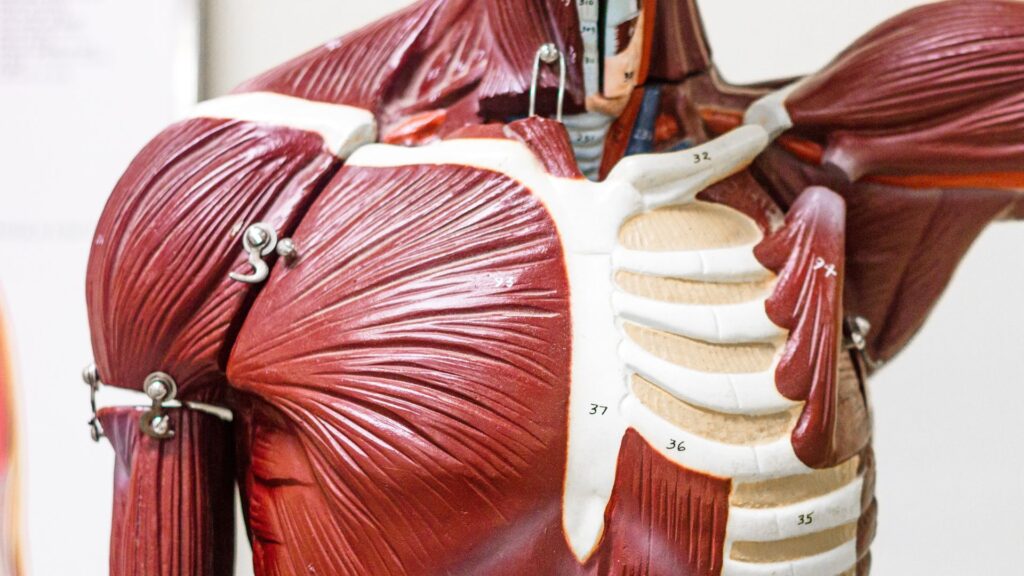
The sternocleidomastoid muscles on each side of the neck enable rotation and flexion. Deep within the neck, the scalene muscles contribute to respiration and assist in neck movement. The levator scapulae muscles aid in elevating the shoulders.
Finally, the suboccipital muscles, located at the base of the skull, assist with head posture and subtle movements.
Did your eyes glaze over while reading about the anatomy of the neck and shoulders? Don’t worry — you don’t need to become a yoga anatomy expert to cure neck and shoulder pain.
Still, understanding the intricate interplay of the neck and shoulder muscles will help you achieve proper alignment and prevent discomfort for overall neck and shoulder health.
Common causes of neck and shoulder pain
As we dive into yoga for neck pain and shoulder pain, it’s helpful to understand why you might be struggling with these injuries.
Again, keep in mind that we must take a holistic approach to stabilizing the body. As you saw with Denise, her weak shoulders were actually a result of her inactive core muscles!
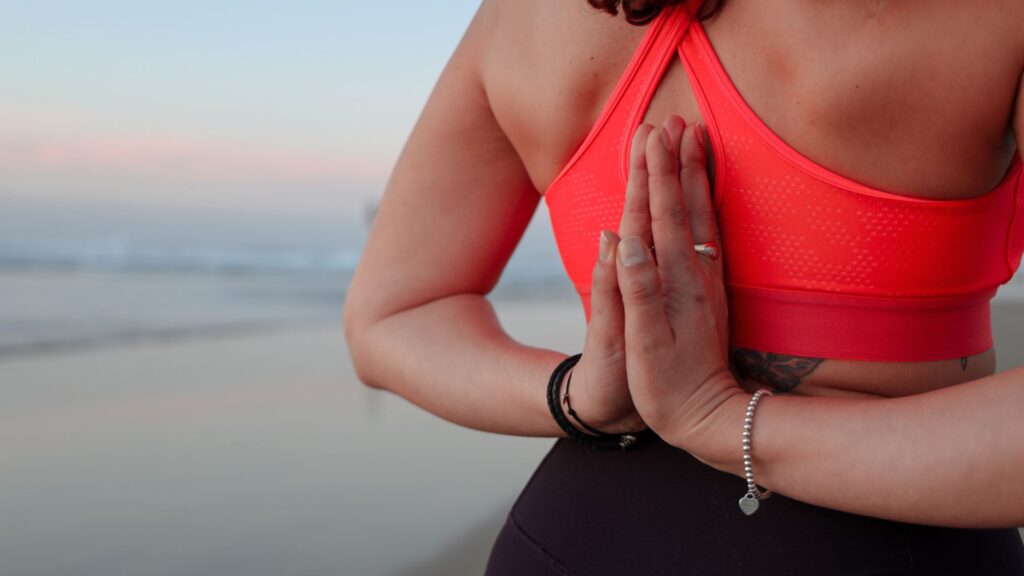
That said, here are some common reasons you might have neck and shoulder pain:
- Muscle strain: Overusing weak or inactive muscles (like in chaturanga dandasana) can strain the neck and shoulders, leading to pain and discomfort.
- Poor posture: Poor posture while working, using electronic devices, or sleeping can contribute to neck and shoulder pain. As you practice yoga for neck and shoulder tension, consider how you’re sitting!
- Muscle instability: If our muscles don’t contract properly, we create instability in the body. And where there is instability, injury is sure to follow.
- Pinched nerves: Compression or irritation of nerves in the neck or shoulder region can cause radiating pain, numbness, or tingling sensations.(If you’re struggling with sciatica, read this.)
- Stress and tension: Emotional stress and anxiety can lead to muscle tension and stiffness in the neck and shoulder area, resulting in pain and even injury.
Yoga for neck and shoulder pain
Fortify your body against future pain and injury with these five yoga poses for neck and shoulder pain.
Let’s begin with a simple shoulder muscle test.
Find a comfortable seated position. Raise your arms straight overhead.
Observe how far back you can extend your arms while maintaining alignment and stability throughout your body. Keep your arms straight and avoid arching the back or pushing out the chest.
Now try a push-up. Bring your knees down to the ground or stay in plank pose. Notice how you feel in this push-up — how much strength and stability you have. You can do one or two.
We’ll return to this test at the end of our yoga poses for neck and shoulder pain relief so that you can compare how you feel before and after these activations.
1. 360-degree shoulder rotation
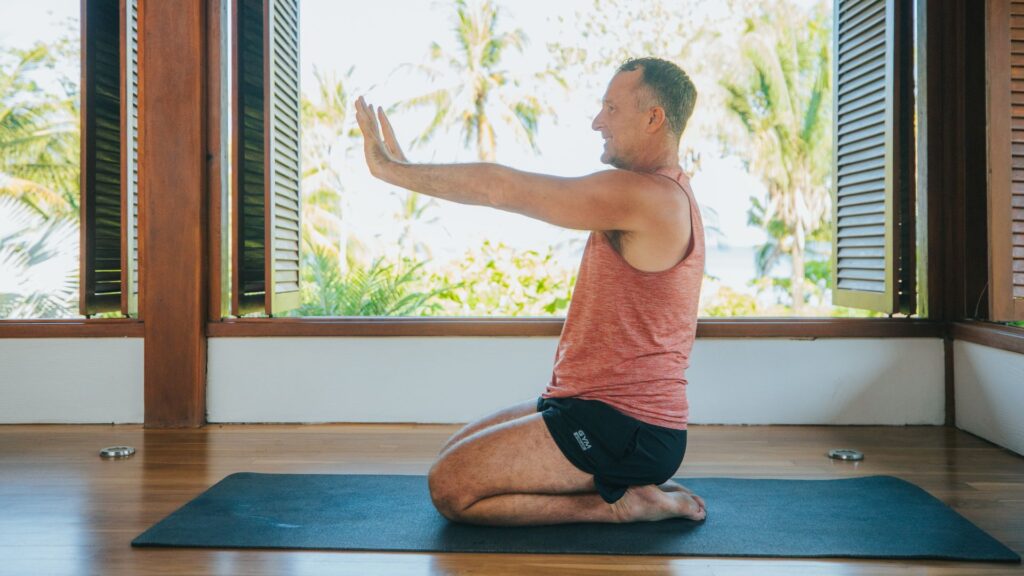
Come to a comfortable standing position with your arms at your sides. Imagine your shoulder blades moving down your back. I like to visualize moving my shoulder blades into my back pockets.
Hold this movement for six seconds, then repeat it six times. On each repetition, imagine pulling the shoulder blades a bit further. This action directly impacts the serratus anterior, a crucial muscle for shoulder blade stability.
Now bring your hands forward in front of you with your arms straight. Pretend you are pushing into an imaginary wall.
Don’t round through your spine; this action should come through the protraction of your shoulders. Hold for six seconds, and repeat six times.
Bring the arms out to your sides and turn your palms up. Imagine you are squeezing your thumbs back behind you while keeping your arms straight. Be careful not to arch through your upper back. Hold for six seconds, and repeat six times.
Finally, take your arms straight up overhead. Allow your arms to open up to a 45-degree angle (your arms should look like a Y.)
Take your thumbs back as you squeeze your shoulder blades together. Engage through your midline. Hold for six seconds, and repeat six times.
2. Pectoral muscle activation
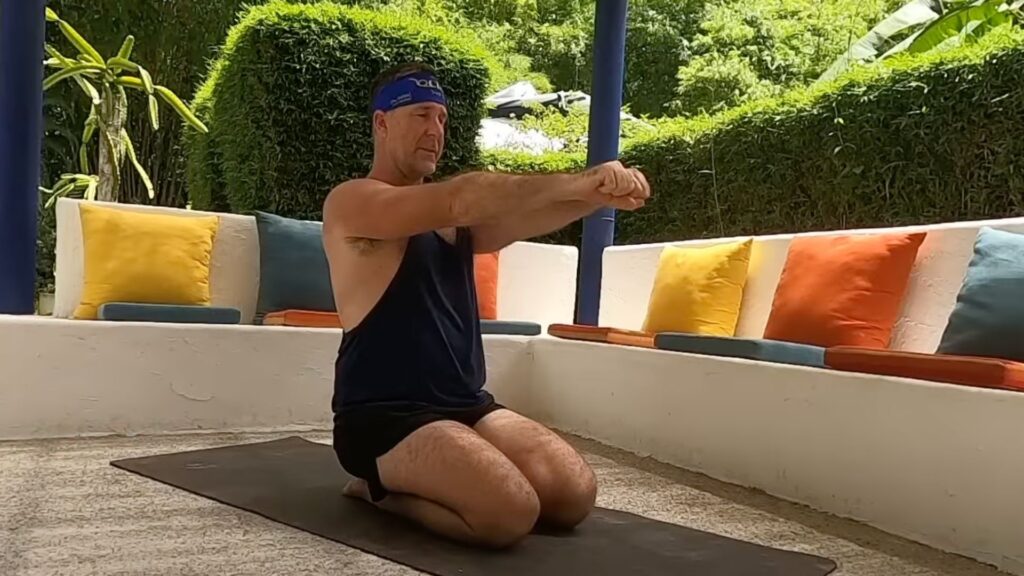
This AYAMA exercise seems simple, but trust me: it quickly fires up your pectoral muscles and activates your entire upper body!
Bring your arms straight in front of you. Make a fist with your hands. Now, gently bring your fists together with your thumbs touching. Hold for six seconds, and repeat six times.
Again, sometimes the slightest effort has the most tremendous impact on waking up your muscles!
Pro tip: Sitting at your desk all day? Take a few moments to practice this activation — you’ll immediately feel the difference.
3. Salabhasana
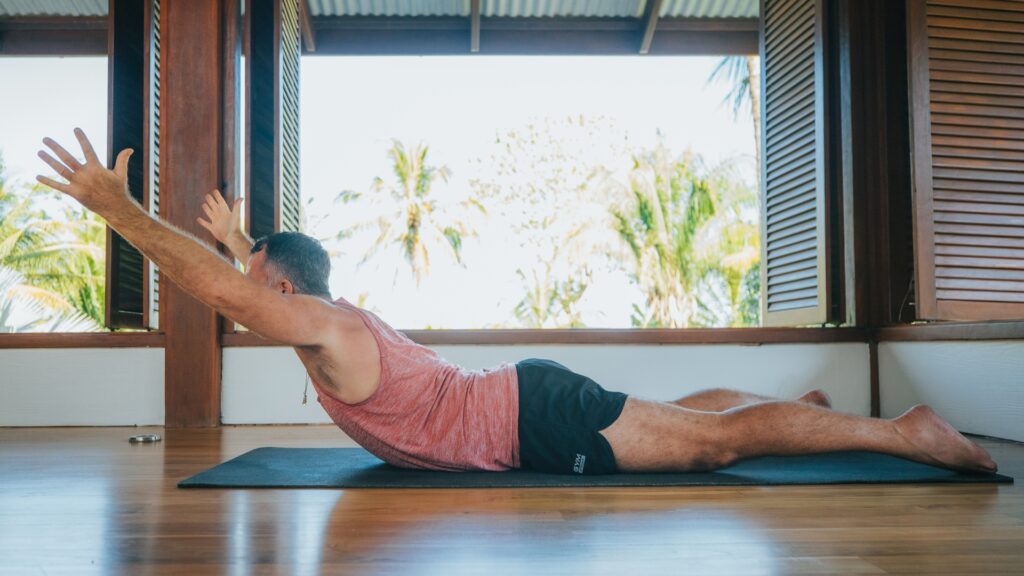
I make an effort to practice salabhasana every day — it just feels that good! Plus, this yoga pose for neck and shoulder pain engages the back muscles, improves posture, and promotes proper alignment.
If you’re feeling tension in your neck and shoulders or even just need to quiet your mind, salabhasana is a fantastic go-to.
To do salabhasana or locust pose, begin by lying face down on your yoga mat with your arms resting alongside your body, palms facing downwards.
Engage your core muscles and lengthen your tailbone towards your heels to create a stable foundation.
As you inhale, lift your chest, head, and legs off the ground simultaneously while keeping your gaze forward and your neck aligned with your spine.
Extend your arms backward with your palms facing upwards, and press your legs together while engaging your glutes and activating your back muscles.
Hold this pose for six seconds. To release, exhale and gently lower your chest, head, and legs to the mat. Repeat six times.
4. Tricep muscle activation
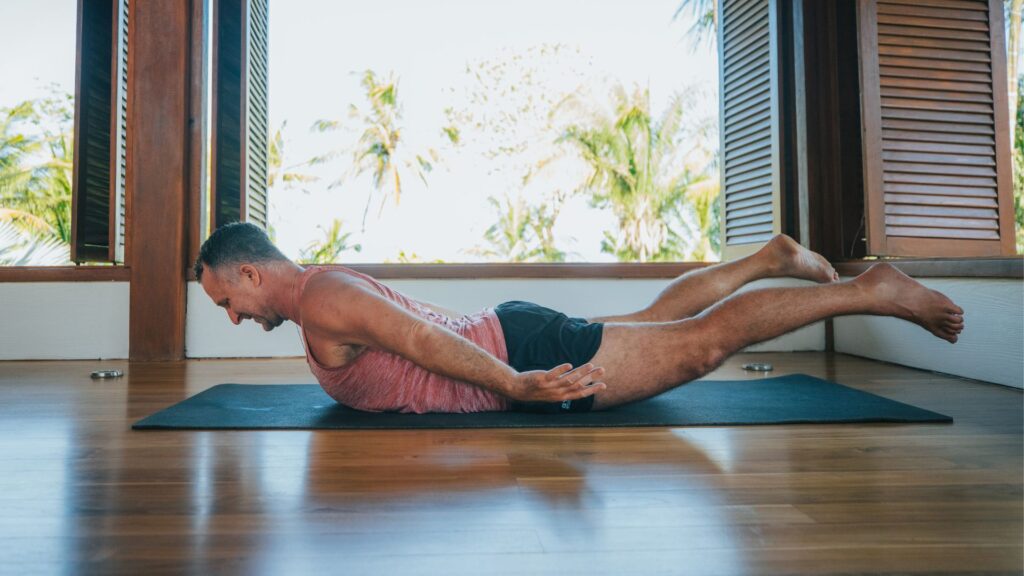
You can practice this yoga for neck and shoulder relief while seated or lying down. I prefer to lie on my stomach with my arms along my sides.
Externally rotate your arms ever so slightly. Keep the shoulders in a neutral position as you lift your arms as high as you can off the ground. Hold for six seconds, and repeat six times. That’s it!
5. Serratus push-up
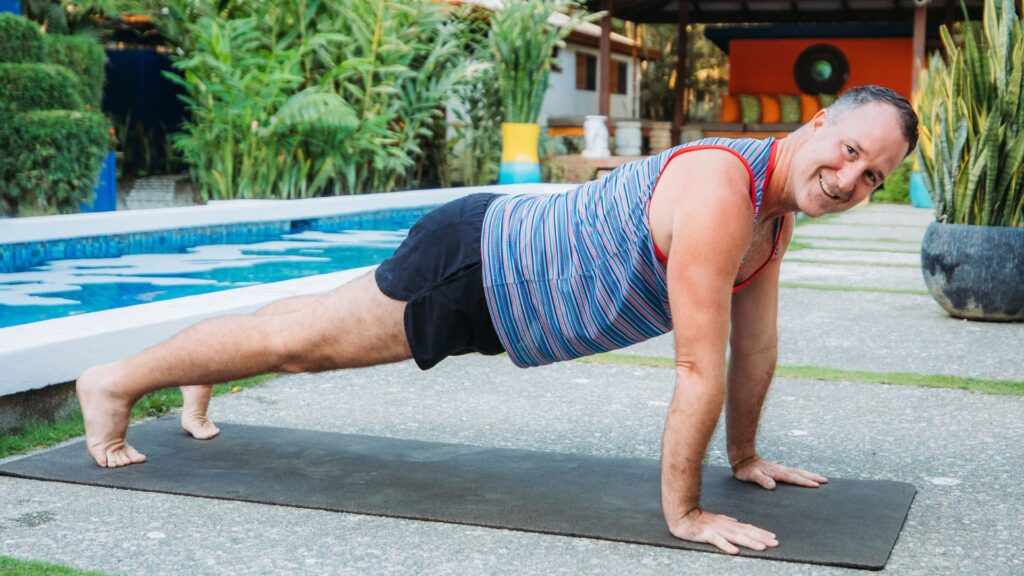
This isn’t your normal push-up, so stick with me for a sec…
Come into a push-up position. You can keep your knees on the ground, or lift them up if that feels strong and stable.
Maintain a neutral position in your spine. Then, push the ground away from you as you lift your mid back up toward the ceiling.
It’s a subtle movement but one that should feel quite strong as you activate your serratus muscle!
Okay…
How are you feeling? Let’s return to our initial muscle test so that we can assess the difference in our strength and stability.
Lift your arms straight up overhead. Do they extend further past your ears?
Now try your push up once more, either on your knees or from full plank.
Does your push up feel easier? Do your shoulders feel more alive and stable? Now you can move throughout your day knowing that your shoulders are working properly!
To sum it up
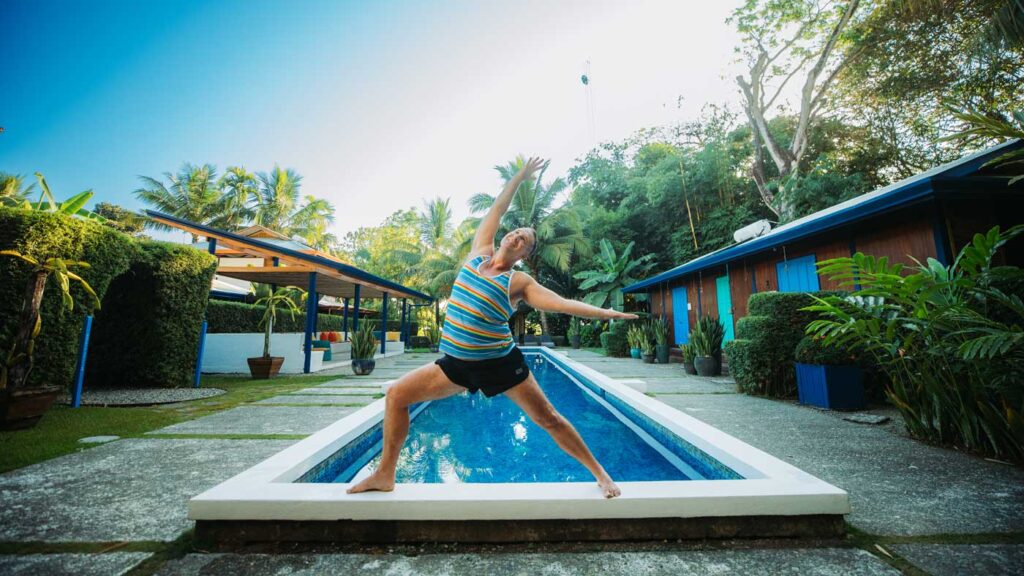
When neck and shoulder muscles are pushed beyond their limits (like when we practice chaturanga dandasana incorrectly 8,647 times), it disrupts the neuromuscular connection. This leads to instability, weakness, and pain.
Incorporating yoga poses for neck and shoulder pain into your regular practice can help strengthen key muscles, improve stability, and prevent injury.
Start with these five easy yoga poses — just a few minutes a day is all it takes to restore balance to your body.
Ready to relieve pain for good? Get started with AYAMA™, a revolutionary approach to yoga that’s already helped hundreds of people to live pain-free.
